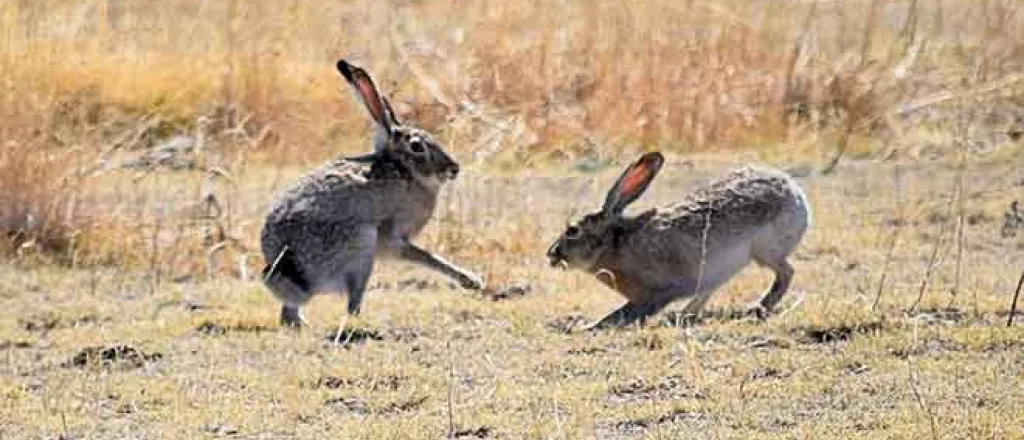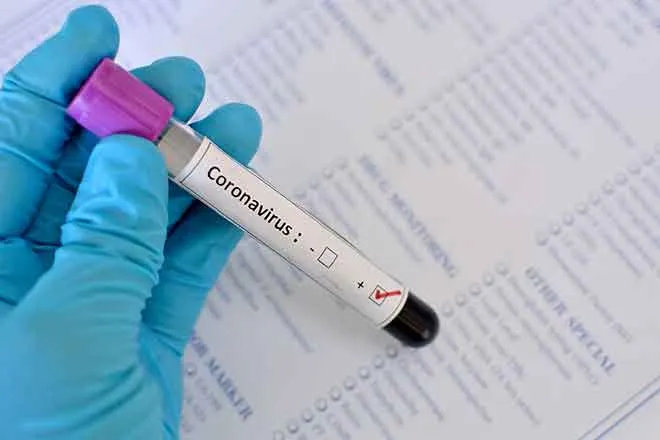
Rabbit Hemorrhagic Disease Virus confirmed in Adams County
Rabbit Hemorrhagic Disease Virus type 2 (RHDV-2) was confirmed by Colorado Parks and Wildlife Thursday in dead wild jackrabbits found east of Barr Lake State Park in Adams County.
This now marks the seventh county in Colorado with positive RHDV-2 cases. The other six counties are Alamosa (wild cottontail and jackrabbits), El Paso (feral rabbits, wild jackrabbits and domestic rabbit), Montezuma (domestic rabbit), Prowers (wild cottontails), Pueblo (wild cottontails) and Weld (domestic rabbit).
CPW picked up six dead jackrabbits from the Adams County landowner after she reported seeing them on the morning of June 4 walking her property. The woman stated she saw dead rabbits on her property over the previous three weeks, all single ones, never groups of dead rabbits.
Wildlife officers submitted the six jackrabbits to CPW’s Wildlife Health Laboratory for necropsy. Testing was conducted by the USDA Foreign Animal Disease Diagnostic Laboratory and was reported as positive for RHDV- 2 on Thursday.
“We will continue to monitor jackrabbits and cottontails in all the counties of the Denver Metro Area,” said Matt Martinez, Area Wildlife Manager for seven counties surrounding Denver. “This may appear to be an isolated incident, but that is a part of rural Adams County, so it is very possible there are other cases out there that haven’t been observed or reported.”
Jackrabbits have lengthy back legs and big ears, up to two feet long, weigh 6-9 pounds and live in open country. Cottontails are about 16 inches long, weigh about two pounds, have shorter ears and live in brushy habitat.
The last RHDV-2 case prior to the one in Adams County was on June 6 of a domestic rabbit from Weld County.
RHDV-2 does not affect humans or domestic species other than rabbits but is highly contagious and lethal among rabbits. Affected animals may have blood staining the nose and mouth.
RHDV-2 is considered a foreign animal disease and is of high concern at the state and federal levels. Until recently, RHDV-2 was not considered a virus that would infect North American cottontails or hares; however, cases have now been reported in numerous states in the Southwest region of the United States, including Colorado. CPW and the Colorado Department of Agriculture (CDA) have increased efforts to raise awareness of the occurrence and spread of this disease in Colorado.
This virus has significant impacts on domestic rabbits as well as wild rabbits and species that prey upon them in Europe. However, multiple dead or sick rabbits can also be a sign of tularemia or plague, diseases that can cause serious illness in people.
Do not handle or consume sick or dead wildlife, and do not allow pets to contact or consume wildlife carcasses. RHDV-2 is not related to COVID-19.
Guidelines for Wild Cottontails, Hares and Pika
- Report three or more dead animals within a two-week period, in a neighborhood or other small area; animals seen alive with clinical signs; ANY dead or sick snowshoe hares or pikas.
- Do not handle rabbits or rodents that have been found dead.
- Do not allow pets or scavengers to feed on found carcasses. Though RHDV-2 is not a risk to pets other than domestic rabbits, a number of other pathogens and parasites from carcasses can affect pets.
- Do not handle or consume rabbits or other game animals that appear to be sick. Instead, report these cases to the nearest CPW office.
- Meat from healthy rabbits harvested by hunters is safe to consume when cooked thoroughly.
Guidelines for Domestic Rabbits
- Rabbit owners should exercise extreme caution and biosecurity to avoid accidental exposure of domestic rabbits through contaminated feed, bedding, equipment, or clothing that may have come in contact from infected wild rabbits or birds that could transfer the virus from infected wild rabbits.
- Domestic rabbits should not be housed outdoors in areas where rabbit hemorrhagic disease has been detected in wild rabbits.
- Veterinarians and owners must report suspected RHDV2 cases in domestic rabbits to the State Veterinarian’s Office at 303-869-9130. Disease investigations will be completed by a Foreign Animal Disease Diagnostician.
- Contact your veterinarian for more information about this disease in domestic rabbits.
Helpful Links on RHDV-2:
https://cpw.state.co.us/Documents/Wildlife-Health/Rabbit_Hemorrhagic_Disease.pdf
http://www.cfsph.iastate.edu/Factsheets/pdfs/rabbit_hemorrhagic_disease.pdf
https://www.aphis.usda.gov/publications/animal_health/fs-rhdv2.pdf
https://www.colorado.gov/aganimals/rabbit-hemorrhagic-disease-virus-rhdv















